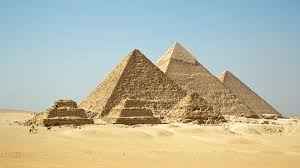The Seven Wonders of the World: Discover Earth’s Most Iconic Man-Made Marvels

The Seven Wonders of the World are not just impressive structures—they are symbols of human imagination, engineering, and cultural heritage. These global landmarks have been recognized for their beauty, scale, and historical impact. While the original Seven Wonders were all from the ancient world, most of which no longer exist, a modern list known as the New Seven Wonders of the World was compiled in 2007 through a global vote by the New7Wonders Foundation.
Let’s take a closer look at the New Seven Wonders of the World, which span continents and civilizations.
1. Great Wall of China (China)
One of the most iconic structures in the world, the Great Wall of China is a massive fortification stretching over 13,000 miles across northern China. Built between the 7th century BC and the 17th century AD, it served as a defensive barrier against invasions and raids. Constructed from stone, brick, tamped earth, and other materials, the Wall snakes across rugged terrain, deserts, and mountains. It is not only an architectural feat but also a symbol of China’s historical strength and unity.The Seven Wonders of the World
2. Petra (Jordan)
Carved into rose-colored sandstone cliffs, Petra is an ancient city in southern Jordan that once served as the capital of the Nabataean Kingdom. Dating back to around 300 BC, Petra was a vital trading hub connecting Arabia, Egypt, and the Mediterranean. The city’s most famous monument, Al-Khene (The Treasury), features intricate Greco-Roman-inspired architecture. Petra is often called the “Lost City” because it remained unknown to the Western world until the 19th century.
3. Christ the Redeemer (Brazil)
Standing 98 feet tall with arms outstretched, Christ the Redeemer overlooks the vibrant city of Rio de Janeiro from the peak of Mount Corcovado. Completed in 1931, this Art Deco statue of Jesus Christ has become a symbol of peace, faith, and Brazilian identity. Made of reinforced concrete and soapstone, it’s one of the most recognizable religious monuments in the world and a popular pilgrimage site.
4. Machu Picchu (Peru)
Hidden high in the Andes Mountains, Machu Picchu is a mysterious Incan citadel built in the 15th century and later abandoned. It was rediscovered in 1911 by American historian Hiram Bingham. Often referred to as the “Lost City of the Incas,” Machu Picchu showcases impressive stone construction techniques without mortar and features agricultural terraces, temples, and astronomically aligned buildings. Its purpose remains a topic of debate, but many believe it was a royal estate or sacred religious site.
5. Chichén Itzá (Mexico)
Located in Mexico’s Yucatán Peninsula, Chichén Itzá was a major center of the Maya civilization between the 9th and 12th centuries. The site’s most famous structure, El Castillo (Temple of Kukulcán), is a massive step pyramid that aligns with celestial events. During the spring and autumn equinoxes, the shadow cast by the pyramid creates the illusion of a serpent slithering down the steps—a stunning example of Mayan astronomical and architectural precision.
6. The Colosseum (Italy)
A symbol of ancient Rome, the Colosseum is the largest amphitheater ever built and remains a masterpiece of Roman engineering.The Seven Wonders of the World Constructed between AD 70 and 80, it could hold up to 80,000 spectators for public spectacles such as gladiator contests, animal hunts, and mock naval battles. Despite suffering damage from earthquakes and stone robbers, the Colosseum still stands as a monument to Roman power, entertainment, and innovation.
7. Taj Mahal (India)

Located in Agra, India, the Taj Mahal is an exquisite white marble mausoleum built by Mughal Emperor Shah Jahan in memory of his wife Mumtaz Mahal. Completed in 1653, it is an outstanding example of Mughal architecture, which blends Persian, Islamic, and Indian styles. Its symmetrical design, intricate carvings, and reflective pools create a visual masterpiece, often regarded as the world’s greatest monument to love.
Why These Wonders Matter
The New Seven Wonders of the World celebrate global heritage and human achievement. Each site tells a unique story of culture, religion, science, and politics. Visiting these locations connects people to their past and inspires awe through extraordinary architecture and ancient ingenuity. They are not just destinations—they are living legacies.
Final Thoughts
The Seven Wonders of the World are more than tourist attractions—they are powerful reminders of what humanity can accomplish. Whether carved from stone, constructed with mortar, or built to touch the heavens, each wonder captures the spirit of its people and the legacy of its time.
If you’re looking to plan your next adventure or dive into history, exploring these wonders should be on your bucket list. From Asia to Europe, South America to the Middle East, these monuments await your discovery.
Would you like this formatted for a blog post or turned into a downloadable PDF or social media content?
